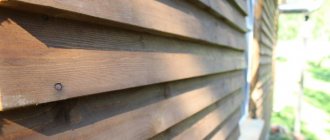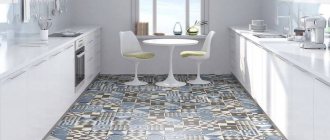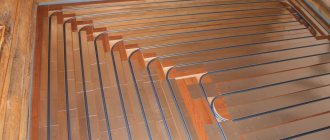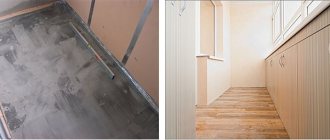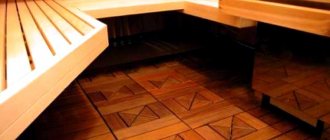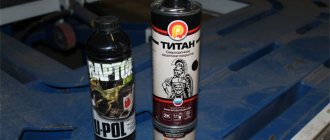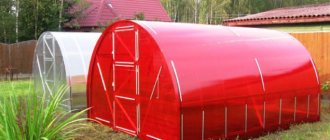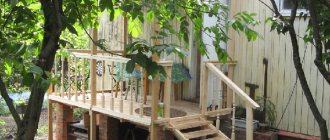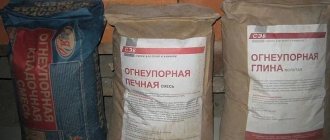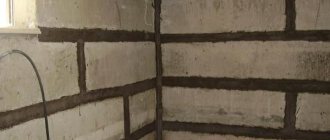This article will discuss the most popular materials for flooring on a terrace, including tiles, boards, concrete, linoleum, etc. We will talk about the correct painting of the flooring for an outdoor terrace, as well as the choice of paint type.
You will find out what the main differences are between different types of materials, and choose the best solution specifically for your terrace.
Why is the floor on an open terrace so special?
You may be surprised, but most owners of a private house with a terrace are faced with the same phenomenon as the annual replacement of the wooden floor of the terrace. This is directly related to the fact that wooden boards are annually exposed to the adverse effects of precipitation. Therefore, without proper protection, yours will experience the same thing. It is clear that everything still depends on the board from which the terrace floor is made. If we talk about decking made of larch or other dense types of wood, then their characteristics are much better and allow you to use the veranda or terrace much longer. But even the best covering on the terrace will not be able to withstand an aggressive environment without protection.
A special feature of the wooden floor on the terrace is the way it is laid. If everything is done correctly and taking into account certain rules, you can extend the service life and safety of wooden boards. What does this include? During construction, it is important to lay the boards so as to maintain a gap of 3–5 mm between them. Then moisture will not accumulate on the surface, but will flow into the space under the floor. In addition, this will promote excellent ventilation of the boards, which will allow the wooden floor to dry faster. It is also important to slope the terrace slightly so that water flows along the grooves in the boards. So, it will not stagnate on the surface and spoil the wood on the terrace.
Still, no matter how professionally you lay the decking board, it requires protection. And the choice of material depends on the type of wood. After all, some build a terrace from simple wood with natural humidity, others buy a special deck board or larch products. And if the first option is cheap, then you will need to pay for the second. Therefore, most often old-style terraces are made from ordinary boards. Nowadays you can find many wood protection products that reliably protect both decking boards and ordinary ones. Let's look at all the options.
Suitable materials
Let's consider materials whose properties meet the listed requirements. It is clear that such popular coatings as laminate, linoleum or carpet do not apply to them. But there are many others.
Option 1 – natural wood
Until recently, edged or tongue-and-groove boards were the most common material for laying flooring in both residential and non-residential premises. If you needed a budget floor on the veranda, what should you make it from if not from boards?
Wooden boards have not yet lost their relevance due to their natural origin, magnificent appearance and pleasant tactile sensations when touched.
But natural wood requires mandatory treatment before making flooring - they must be impregnated with fire-retardant and antibacterial compounds. These solutions protect wood from rotting, damage by insects and fungi, and reduce the ability to catch fire.
Wood floor processing Source materialyinfo.ru
Advice . When choosing how to cover boards on an open terrace, you should pay attention to the degree of resistance of the impregnation and its suitability for outdoor use. To give wood a noble look, you can use tinted compounds.
Nowadays, in addition to the usual planed boards, improved materials are also used for flooring.
- Terrace (or deck) board , which is made only from hard wood, most often from larch. It is very dense, is not afraid of moisture and insects, does not rot and does not lose its external luster for a long time. As a rule, the outer surface of the decking board is equipped with longitudinal grooves that prevent slipping.
Larch decking board Source lesinter.ru
See also: Catalog of projects of houses with a terrace presented at the exhibition “Low-Rise Country”.
- Heat-treated wood , heated to high temperatures in special installations. Temperature treatment imparts high strength and moisture resistance even to species such as pine and birch.
- Antiseptic board , pre-dried and impregnated with antifungal drugs under pressure in special autoclaves. This impregnation significantly increases the service life of the floor, allowing you not to think every year about how to cover the boards on the terrace.
To lay a wooden floor on a terrace, boards without locking joints, with smooth ends and rounded edges are used. They are laid on logs with a thickness of 15 cm, laid at intervals of 50-60 cm. To prevent moisture from retaining on the surface, small gaps are left between the boards. Wooden logs are also treated with impregnations before installation.
Installation of wooden flooring from terrace boards Source acbon.org
The method of fixing the decking depends on the type of material. Ordinary boards are fastened with galvanized screws with the head recessed into the wood. To fix the deck boards, special clips are used that provide hidden installation.
Option 2 – WPC decking board (decking)
WPC is a wood-polymer composite or “liquid wood”. The material that serves as raw material for the production of decking is obtained from crushed wood waste and binding polymer additives. The ratio of these two components can be different, and the more wood there is, the more natural the finished product looks.
Externally very similar to a wooden board, decking surpasses it in many performance characteristics:
- it is free from natural wood defects - knots, cracks, blue stains, etc.;
- the composite material is not afraid of moisture, and therefore does not require treatment throughout the entire service life of the coating;
- it is easy to care for;
- it is easy to install;
- you can choose boards of any color to support the color scheme of the terrace design;
The assortment is not limited to products painted to look like wood. Source okraskadereva.ru
See also: Catalog of companies that specialize in paints and varnishes.
- In addition to the main elements of the flooring, it is possible to purchase related materials: joists, end caps, decorative corners and even railings and balusters for decorating the terrace.
If you need to decide how to cover the floor on a wooden terrace in order to maintain a single “wooden” style, while saving yourself from the extra hassle associated with caring for the natural covering, it is unlikely that you will be able to find something better than a WPC decking board.
The boards are attached to the joists using special plastic or metal clips. If necessary, they can be sawed and drilled like regular wood.
What qualities should the coating have?
Terraces can be covered or open, located on the ground or on a foundation. Sometimes for the winter or in bad weather they are closed with sliding or soft windows or other decorative enclosing structures.
But these are, as a rule, unheated rooms in which people wear outdoor shoes. Therefore, the terrace floor experiences all the hardships of our harsh climate and considerable mechanical stress. Based on these conditions, the basic requirements for coating can be determined.
When deciding what to cover the terrace with, you should focus on materials with the following characteristics:
- High frost resistance and low water absorption. Any material is destroyed in the cold if water gets into its pores and freezes;
- Abrasion resistance. Usually the terrace is the most accessible place in the house, along with the porch and hallway. The floor material must have wear resistance class 4 or 5;
- Strength. The coating, which is subject to constant mechanical and atmospheric loads, must withstand them without loss of strength, otherwise it will have to be changed frequently.
Note. This requirement applies not only to the floor covering itself, but also to the base on which it is laid.
- Moisture resistance. Under the influence of moisture, the material should not rot, swell or deform;
- Anti-slip properties. They are a guarantee of the safe movement of people, especially in the winter season.
Additional requirements include resistance to fading under the influence of sunlight, ease of cleaning the surface from dirt, maintainability, and an affordable price. Decorative qualities are also important - color, texture, shape of the flooring elements. But when choosing what to make the floor from on the terrace, you should not give them a primary role.
Requirements for terrace flooring
When choosing the optimal material for the floor on the terrace, the average buyer first of all pays attention to the price. Is it worth overpaying? Maybe buy it cheaper? All these arguments are not serious. The flooring must be of high quality and suitable for aesthetic purposes. In this case, it is better to relegate the issue of price to the background.
The next selection criterion is ease of installation and subsequent care. In this case, it is worth studying the technology of laying each material, and, in the case of self-installation, choosing a less labor-intensive coating. However, as in the issue of price, you should not refuse the coating you like just because you are not able to carry out the construction work yourself. Such sacrifices, as a rule, do not lead to anything good.
In addition to the requirements discussed above, the floor on the terrace must have the following basic characteristics:
- High frost resistance (due to the predominant presence outside heated rooms). Materials with this characteristic have a low water absorption rate - no more than 3%. The virtual absence of moisture impregnation allows the coating, when freezing, not to be subject to the destructive forces of expanding ice (cracking, peeling, deformation).
- Moisture resistance. This characteristic is closely related to frost resistance. However, in addition to expansion at sub-zero temperatures, an abundance of moisture on the floor in the warm season can lead to rotting of the material (important for wood) and the formation of fungus and mold.
- Durability and low abrasion. The higher these indicators, the longer the terrace floor will last and retain its natural appearance. The minimum abrasion class for terrace materials is 4.
- The coating should not be slippery. In conditions of wet or icy floors, this characteristic is especially important to ensure safe movement.
- UV stability (resistance to ultraviolet radiation). Materials with low protection from ultraviolet rays in the absence of proper protection (awnings) from sunlight can reduce the color intensity of the coating over time.
Having considered the basic requirements for covering a terrace, you can move on to a direct review of the materials available on the market and highlight the advantages (disadvantages) of each.
Video description
The installation process is shown in more detail in the video:
Option 3 – ceramics
Ceramics is a generalized concept of several types of coatings suitable for floor coverings. If we talk about the floor on the veranda, what is the best material to use for flooring in such a specific room, then this category includes special ceramic tiles for outdoor use, porcelain tiles and clinker tiles:
- Ceramic tiles must be frost-resistant. In order not to be mistaken, you need to look at the product labeling and find the icon indicating frost resistance - a snowflake. It is also important to pay attention to the abrasion class (4 or 5), type of surface (not glazed) and area of application.
Product labeling will tell you everything about their characteristics Source roomester.ru
- Porcelain stoneware contains small fractions of granite, which makes it very durable and wear-resistant. Like ceramic tiles, they come in a huge range of colors and can imitate various natural materials. Porcelain tiles with a rough, unpolished surface are suitable for the terrace.
- Clinker tiles (clinker bricks, clinker paving stones) are characterized by absolute moisture resistance and, as a result, the highest frost resistance. This is an ideal material for paving not only open terraces, but also sidewalks and parking lots on the site. The palette of shades is wide - from white to terracotta.
Floors made of clinker paving stones Source domdobro.ru
The basis for laying a heavy ceramic coating should be a reinforced concrete slab or monolithic concrete leveled with a cement screed. Installation is carried out only with frost-resistant glue for external use.
Helpful advice . Since the “weak” point of tile coverings is the seams, which are destroyed by freezing moisture, when laying them it is advisable to create a slight slope for the drainage of precipitation.
In addition to strength and durability, the advantages of ceramics include resistance to fading, ease of cleaning and maintainability without replacing the entire coating.
Methods for processing natural wood decking boards
The most reliable treatment for decking is three-phase protection:
- During installation, the ends of the board are treated with a special wax emulsion, since these places are most vulnerable to moisture (construction liquid wax can be used instead of emulsion);
- on the back side, the wood can be damaged by insects and microorganisms that cause rotting and mold formation, so antiseptic impregnations are used (they are oil- and water-based);
- The most important processing of decking boards made of larch and other types of wood is performed on the front side of the product (for this, cold or hot oil is applied to the surface, the decking is varnished or painted).
To decide how to cover a wooden floor on an open veranda, you need to study the advantages, features and types of finishing coatings that are applied from the front side.
Choosing the type of paint and impregnation
Wood products require constant care to maintain their good condition and original appearance. Now in the markets you can see a huge variety of products that will help preserve the tree.
Varnishing the board
If painting a decking board creates a completely opaque layer on the surface that hides the beauty of the material, then varnish allows you to obtain a strong, wear-resistant, durable and transparent coating. The varnish does not hide the beauty of the texture of the material, so the terrace or veranda looks natural and natural.
Varnish for decking boards has the following advantages:
- aesthetic appeal of the surface;
- the applied protective layer makes it easier to care for the board and requires regular updating;
- high protection against moisture and drying out;
- wear resistance of the surface.
Disadvantages of varnish:
- the varnish firmly clogs all the pores of the wood, so the material cannot breathe;
- under a dense varnish layer the natural beauty of the wood is slightly lost;
- fragility of the coating;
- during operation, the varnish cracks and wears out, so it needs to be reapplied (in this case, you will have to sand the entire surface to remove the old varnish layer);
- impossibility of local repairs (varnish cannot be applied to individual areas of the floor, since areas with layers will be visible, you will have to sand and apply a new coating on the entire surface).
Types of varnishes for outdoor boards
Types of hidden fastenings for decking boards
The following types of varnishes are suitable for decking laid outdoors:
- Yacht varnish. These are polyurethane-alkyd compounds or alkyd-based mixtures. The main advantage of these compounds is increased hardness and wear resistance. If you cover a board that will be used outdoors with yacht varnish, it will not last more than one season, since it will crack due to deformation expansion and contraction of the wood. This is due to the low elasticity of the varnish. It peels off very quickly from the base when used outdoors.
- Facade varnish. It includes alkyd-acrylic and acrylic compositions. These elastic mixtures do not crack or peel due to deformation changes in the wood. However, they are quite soft, so they do not increase the wear resistance of the decking. Another disadvantage of facade varnish is that it is very difficult to sand off, since the soft material very quickly clogs the abrasive wheel of the grinding machine.
Important! Varnishes make deck boards easier to care for and extend their service life.
Oil
The most popular and most suitable impregnation for exposed wood flooring. It is based on natural modified oils (linseed, teak, tar) and waxes (beeswax, carnauba).
Wood paints
Paint for decking boards is no less in demand than varnish or oil. Its advantages are as follows:
- simplicity and ease of application;
- creates a durable finishing layer;
- reliably protects the material from moisture and sunlight;
- increases surface wear resistance;
- aesthetic appeal.
The disadvantages of paints for terrace decking include the fact that they hide the natural beauty of the material and the surface loses its natural appearance. Paints wear out and crack quickly.
Types and selection rules
The following types of paint compositions are suitable for external terrace coverings:
- Alkyd and oil paints save money and are suitable if the floor was previously covered with an oil composition. These are reliable, but short-lived coatings.
- Water-based mixtures based on acrylic components provide good adhesion to a wooden base and provide increased resistance of the material to external weather influences. The composition is already ready for use. When thickening, the mixture is simply diluted with water.
- To increase the wear resistance of the floor, polyurethane paints are used. These abrasion-resistant and durable coatings extend the life of your boards by decades.
- Latex paints adhere well to the base, are odorless, and very durable. The most important advantage of latex mixtures is that they allow wood to breathe.
Preparatory work for painting the floor on the veranda
Before proceeding with the design, the coating must be carefully prepared. After all, good wood processing will ensure its strength. To ensure that the base lasts a long time, we recommend that you follow several steps.
The quality of the final coating directly depends on the choice of tools. For work you will need:
- Planer, sandpaper or sander
- Antiseptic impregnation
- Primer mixture
- Paint and impregnation
- Brushes of different sizes
- Roller
Sequence of work
- Remove worn covering. Even the most durable paint and varnish will not be able to transform a cracked layer of old varnish. This also applies to boards. If you notice problem and rotten areas, they need to be replaced. This way you can avoid unpleasant moments when the boards break or begin to creak heavily.
- Check the waterproofing and water drainage system.
- Sand the surface. Here you need to remove the dark layer of the array, which has been subjected to mechanical stress for a long time. You need to sand the material until you see its natural color. We recommend using a special device. This will ensure your floor is treated evenly. For hard-to-reach areas, use special attachments or light sandpaper.
- Carefully remove all debris generated during rough work. Next you can start painting.
Plastic floor
Another good covering option is plastic tiles. This is a relatively inexpensive and convenient coating that is resistant to moisture, low temperatures or mechanical stress. The disadvantage is its structure - it has a mesh structure and freely allows moisture to pass through, which will require waterproofing the base. Plastic tiles are a sports flooring, so their stability and durability are quite high. It is easy to lay it with your own hands, and if necessary, the canvas can be disassembled, the subfloor can be repaired and the covering can be laid again.
Painting technology
Before applying paints, the floor must be protected from moisture and pests. Usually special liquids, primers and antiseptic impregnations are purchased for this. They are very important and perform special functions:
- Makes the material fireproof
- Bleaching
- Prevents the spread of fungus and insect infestation
- Reduces the consumption of the base coating
- Increases resistance to damage
We advise you to buy such solutions from the same company as the paint for the floor on the open veranda.
Drying time for the protective layer is at least three days.
The application of dyes is carried out in several stages. You need to ensure that each layer is very thin. Ideally, the coating should consist of three layers. Floor paint on an open veranda is applied with a roller or a wide brush and done along the boards, not across. Otherwise, the substance will accumulate unsightly between the boards. The sides and hard-to-reach places are treated with a small brush.
Dry the paint for 3-5 days. If the boards are completely new and this is the first coating, then drying can last up to a week.
After you have applied all the layers and dried them thoroughly, the floor should be rinsed with hot water.
Impregnation coating
After the coloring composition has dried, we begin impregnation. Depending on the choice (oil or varnish), the product must be mixed. Read the instructions carefully, as some types of oils require dilution; with varnishes it’s a little easier. Next, use a wide brush to paint each board, paying special attention to the joints and ends.
It takes a day to dry the first layer. After which the application of the composition must be repeated.
Yacht varnishes
This coating is recommended for use exclusively in open areas, because the composition includes toluene and xylene. Inside the house it is highly toxic, but in the fresh air such dangerous substances evaporate. This varnish helps wooden products last even longer. It needs to be updated every five years. This feature allows you to save time, effort and money on annual reconstruction.
Among the positive properties of this coating are deep penetration into wood, a high level of stability, and the ability to counteract sun and ultraviolet irradiation. In addition, after drying, the varnish can repel not only water, but also dirt. Due to the fact that the sun cannot significantly damage the coating, the color remains saturated longer. And due to its transparent structure, the varnish only emphasizes the natural texture and shade of the wood.
Yacht varnishes are divided into several varieties:
- Acrylate - the positive side is its environmental friendliness. But, despite its high price, it does not have great resistance to adverse external factors.
- Alkyd-urethane - valued for its minimal drying time, but, unfortunately, it contains very toxic substances.
- Alkyd - has a low price, but compared to other types it is the most toxic.
- Urethane-alkyd - valued due to the low evaporation of harmful substances. This figure was achieved thanks to some components that inhibit the release of toxins into the air. It can even be used inside the home. It is resistant to temperature changes and floor deformation.
It is recommended to hire a professional to coat the floor surface with this product. Otherwise, an inexperienced person, even in the open air, can be poisoned by dangerous substances.
The work should be carried out starting with dismantling the boards for further sanding using sandpaper. After this, you can apply the decking varnish 2-3 times, waiting 4-5 hours after each.
When working with varnish, it is worth considering that if the wood loses its elasticity due to frost, there will be bad consequences. Yachts, when sailing on a warm sea, are not afraid of such conditions, because they are not there. But for areas with cold winters, it will be better to use varnish a year after installing the tree.
What type of coating should I choose for my decking?
Experienced craftsmen advise owners of private houses to use special oil to cover decking boards. This is a universal, durable material with a high degree of protection. Oil is considered an environmentally friendly product. It is safe for human health, since only oils of natural origin are used in the composition.
Among the benefits that speak in favor of the oil are the following:
- the board acquires a matte finish and natural shine, highlighting the beauty of the texture;
- the material does not crack or dry out under oil, since it can “breathe”, that is, absorb and release moisture;
- Thanks to the presence of special additives, it is easy to buy tinting oil, formulations with waxes or mixtures to reduce surface slip.
The oil guarantees a high degree of ultraviolet protection. Dirt from the oil-coated decking is easily washed off with water pressure. At any temperature, the coating retains high elasticity. Oils with colorants emphasize the structure of wood, and the material looks more expensive and respectable.
Preparation for processing
In order for the decking coating to efficiently fulfill its purpose, it is necessary to carefully prepare the surface for processing. Therefore, if it was previously painted, the paint should be removed. For easier work, use SM-1 emulsion.
In addition to paint, wood can also be damaged by sun and moisture. Due to their impact, the floor may turn black and gray. To remove bacteria and various defects, you can use a grinding machine. The work should be carried out until the surface becomes light. If there are boards on the floor that cannot be restored, they will need to be replaced.
Each impregnation has its own subtleties in application. If an antiseptic primer is used for coating, then the floor will need to be coated with this product and wait for the drying time indicated on the package. This work is carried out several times so that the product can be thoroughly absorbed into the wood. After the last layer is applied, you need to wait three days. Only after this period has passed can you proceed to the procedure for applying the main material.
When treating with such protective agents, it is recommended to use decking varnish for further finishing. It is important to read the manufacturer's instructions before applying because the application process may vary.
Is it necessary to impregnate the wood on the terrace with antiseptics?
Protective impregnation is needed if you plan to paint or varnish the floors on the terrace. In this case, combined formulations containing antiseptic, insecticidal, and water-repellent components are best suited. They will protect the wood from damage if the film of the main coating is damaged during operation.
When using terrace oil, no additional impregnation is needed. On the contrary, they are even harmful, since they will block the pores and prevent oil from penetrating into the wood fibers.
Before applying oil, sand the wood to help it absorb better.
As you can see, the easiest and most effective way to protect exposed wood floors is to saturate them with a special decking oil. And then you just need to update the impregnation from time to time, and your terrace will always look well-groomed.
Use of oils
There is a certain sequence of actions that can be performed independently to process the coating:
- Boards must be cleaned of dust and debris.
- The oil composition must be applied using a roller, brush or sponge. The end and back parts of the board must be processed. Before applying the decking coating and during this procedure, you should stir the oil vigorously to ensure its homogeneity.
- It is important to carefully study the instructions for using oil impregnation, since sometimes the manufacturer requires re-application of the composition several hours after the first procedure.
- Laying of treated boards can be carried out approximately a week after treatment, so that the treated wood has time to reach its maximum condition.
Features of operating a terrace or open veranda
Usually the terrace is located at the entrance to the room, so it is used constantly. In the warm season, people are on the terrace almost from morning to evening. Quite often, this part of the home serves as a hallway connecting the street with the rooms, along which people walk in street shoes without taking off their shoes. This circumstance should be taken into account when choosing material for finishing the floor. It should be resistant to abrasion and not deteriorate from frequent cleaning.
The veranda is an open or semi-open room, so it experiences all weather fluctuations. These include daily or seasonal temperature changes, dew, precipitation, and ultraviolet radiation. Under their influence, the wood shrinks or swells, causing stress on the paint layer on it. The wrong material cannot withstand such loads and will crack.
Another aspect that should be taken into account when finishing the veranda is biological. Wood serves as food for some living organisms, such as molds or insect larvae. Larch, often used for cladding, is a tasty morsel for wood-boring beetles. If the boards are not treated with special antiseptic and insect repellent substances, the wood will become a target for mold and pests that destroy it.
Interior decoration
Protection of the veranda from the inside depends on the presence or absence of:
- glazing;
- heating;
- insulation.
For an open extension, delimited from the street only by a low parapet, there are practically no special differences between the internal and external cladding or painting. If the veranda is glazed, and even more so heated, then the decorative materials will be subject to environmental requirements. They should not have a pungent odor or toxic color, or produce harmful fumes or radiation.
The inside of the parapet or walls can be lined with moisture-resistant plywood or fiberboard. They are not as susceptible to rain and ultraviolet radiation as external cladding, so the requirements for the technical characteristics of materials may be somewhat relaxed. But this does not mean that you should abandon antiseptics and fire retardants. A wooden veranda needs their protection on both sides.
When can you use the building and how to care for painted surfaces?
In the first weeks after painting, the top layer is especially sensitive to mechanical stress. During this period, it is recommended to avoid wet cleaning using detergents and remove dust with a vacuum cleaner or soft brush.
Sometimes owners of houses with verandas complain that the floor quickly gets dirty and looks sloppy. Experienced craftsmen recommend using varnishes and paints of dark, non-staining shades to finish the floor of an open veranda. When choosing between glossy and matte floor finishes, choose matte. It is more practical because dust is less noticeable on it.
The finish will last longer if you lay paths or rugs in a walk-through area with active traffic. To prevent scratches on the legs of tables and chairs on the terrace, it is recommended to attach rubber or felt pads.
Depending on the type of contamination, dry or wet cleaning is carried out periodically. When the veranda is not in use, it is advisable to cover the wooden floor with a film or tarpaulin, which must be removed periodically for ventilation.
As abrasion or minor defects appear, the coating is restored. To update, you do not need to re-treat the floor with an antiseptic or primer. It is enough to wash the coating well and after drying, apply a layer of varnish, paint or oil.
I hope that the material presented is quite enough to properly process wooden structures exposed to the atmosphere on your own.
Types of paints and varnishes for the veranda
Even highly resistant varnishes are not intended for external use when treating the veranda floor. They cannot be used to treat open terraces. For this purpose, special formulations are being developed. They have several additives that help counteract temperature changes and ultraviolet rays. Among them the following groups can be distinguished:
- yacht varnishes;
- terrace oils - they are often used to treat verandas;
- chlorinated rubber paints.
Materials from each group differ in their application features. You should understand their pros and cons. They need to be considered in detail. In addition, care must be taken to create the correct design of the veranda. This will ensure its safety for many years.
Regardless of the presence of a canopy over the veranda, its surface is still exposed to precipitation and sunlight. One of the active reagents is water. This means that when designing a veranda, it is necessary to minimize its delay on the covering.
This goal can be achieved using water-repellent coatings. The veranda flooring is protected from the effects of water by choosing the correct floor structure. It is necessary to leave 3 mm gaps between the boards. Water will be drained from the veranda through them.
What wood should you choose to build an open veranda? Soft and hard wood can be selected for this purpose. Hardwood has an attractive appearance and many useful properties. However, the price of such wood is quite high. When building a veranda from such boards, you will have to pay a considerable amount.
Soft varieties are cheaper. Their list includes pine, larch and spruce. Such boards are much easier to process. Using antiseptics and paints can make such a floor durable and reliable.
It is also important to understand such an indicator of wood as operational safety. If the floor gets wet and there is dirt on the surface of the wooden elements, the floor becomes slippery. To increase the safety of using such a covering, it is necessary to choose boards with longitudinal grooves for the construction of the flooring. This will increase the surface friction coefficient.
Before applying any paintwork, it is necessary to dry wooden products. In addition, they need to be sanded. The surface of the boards should be perfectly flat. This will make them more attractive. This will ensure better adhesion of the wood to the paintwork material used.
The problem of open terraces
A terrace is an open space exposed to constant temperature changes, harmful ultraviolet radiation, precipitation and abrasives that get there on the soles of rough street shoes. That’s why the boards there have to be changed often. For some summer residents, replacing floors on the terrace has completely turned into an annual “entertainment”. And no amount of correct laying of boards will save the situation.
No matter how much you make gaps between them, ensuring the outflow of moisture and ventilation, unprotected wood will probably not rot as quickly as on those floors where the owners completely neglected building codes, but it will still happen.
Obviously, this cannot be done without a paint coating. Just what exactly should you buy? After all, the problem today is not a shortage, but rather an oversupply of such products, which has literally flooded the market. Dozens of brand names, hundreds of offers from unknown companies.
And everywhere there is advertising, advertising and advertising. It’s easy for even a professional to get confused here, let alone the average summer resident. But you not only need to think about how to cover the floor on the terrace, but also take care of the proper preparation of the wood before processing.
Important aspects
Everyone knows that unprotected wood quickly deteriorates under the influence of moisture, direct sunlight, frost, wind, as well as as a result of the activity of insects and rodents. Lumber burns in a fire in a matter of minutes, it is literally eaten by mold and mildew, and untimely preventive measures lead to an immediate proliferation of negative processes. Special impregnations - antiseptics and fire retardants, applied during the construction of the veranda, help prevent such phenomena. But protective measures do not end at this stage.
A wooden veranda requires attention throughout the entire period of operation.
From time to time you will have to repaint:
- retaining pillars;
- horizontal piping;
- canopy elements;
- various braces and struts;
- floor, etc.
Decent protection for a wooden veranda will keep it in excellent condition for many years. In this case, the structure of the wood will not be destroyed, and its color will remain practically unchanged. It should be understood that planned repairs are always much cheaper than intervention in emergency situations. But things can even come to the complete destruction of the structure. And then you can simply lose a comfortable recreation area.
In protecting the veranda from negative influences, not only the impregnation of wood with special compounds, but also the finishing of the structure plays a significant role. Decorative materials and paint and varnish compositions are chosen taking into account their environmental friendliness, moisture and frost resistance. It is desirable that they do not fade in the sun and fit harmoniously into the exterior of the house
.
Useful tips
If you are laying down new boards, choose hardwood. The soft ones will quickly wear out and peculiar bedsores will form on such a floor. Hard varieties are more expensive, but they can be called stronger and more durable. If you want to give the wood a special texture, use a stain before applying oil.
When choosing what color to paint the floor on the veranda, pay attention to the color of the stairs and railings near the house. If you have already put together the entire image of the veranda in your head, you can choose a shade to match the color of the furniture. We advise you to choose calm and not flashy colors that will help you relax and enjoy nature.
To prevent the boards from deteriorating due to temperature changes, cover them with thick polyethylene when winter comes. And to avoid slipping and injuries during rain, lay rubber mats with holes.
Put special silicone caps on the legs of furniture that you place on the veranda or glue felt pads. This measure will prevent scratches.
What oils are on the market?
There is a huge range of oils for wood processing on the market. Most often they have a certain shade that can change the color of the wood; The compositions also contain UV filters, making the material more durable.
Sometimes oil cans are labeled with a specific type of wood, such as “Garapa Terrace Oil.” This is not a product for a specific breed, but rather an explanation of what color and texture can be achieved through treatment. In this case, the boards on your terrace will look like an exotic garapa.
Today oils for treating wood with biocides are actively advertised. These are active substances that should be used only when absolutely necessary. If your deck is not under constant flow of water, and there are no bark beetles or mold in the house, then biocides are not needed.
Bottom line
Whichever floor covering option is preferred, you should always take into account the location of the veranda, the degree of its use, the need to install heated floors, glazing of window openings, the presence of communications, and installation features. In addition, it is always necessary to take into account the financial component when making a choice in favor of the optimal coverage in all respects. And proper installation and careful care will help it last for quite a long time, making your stay on the veranda comfortable.
